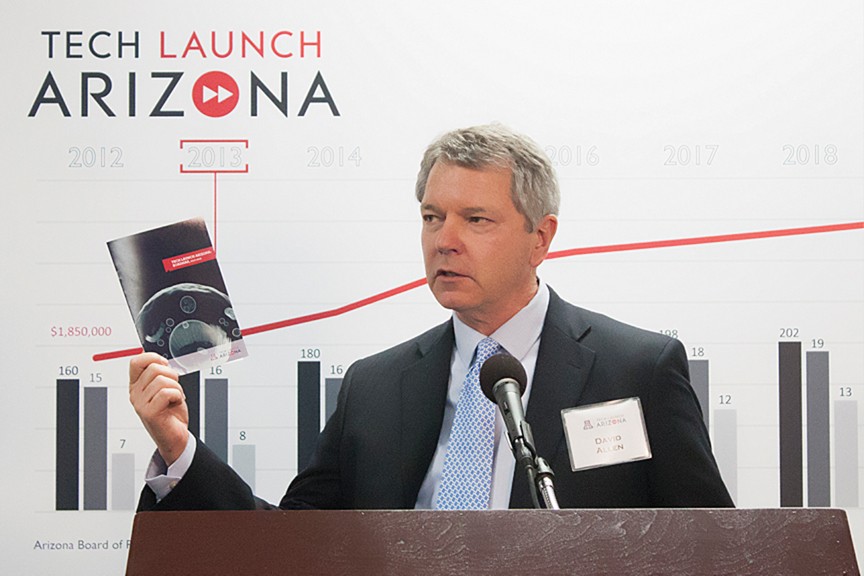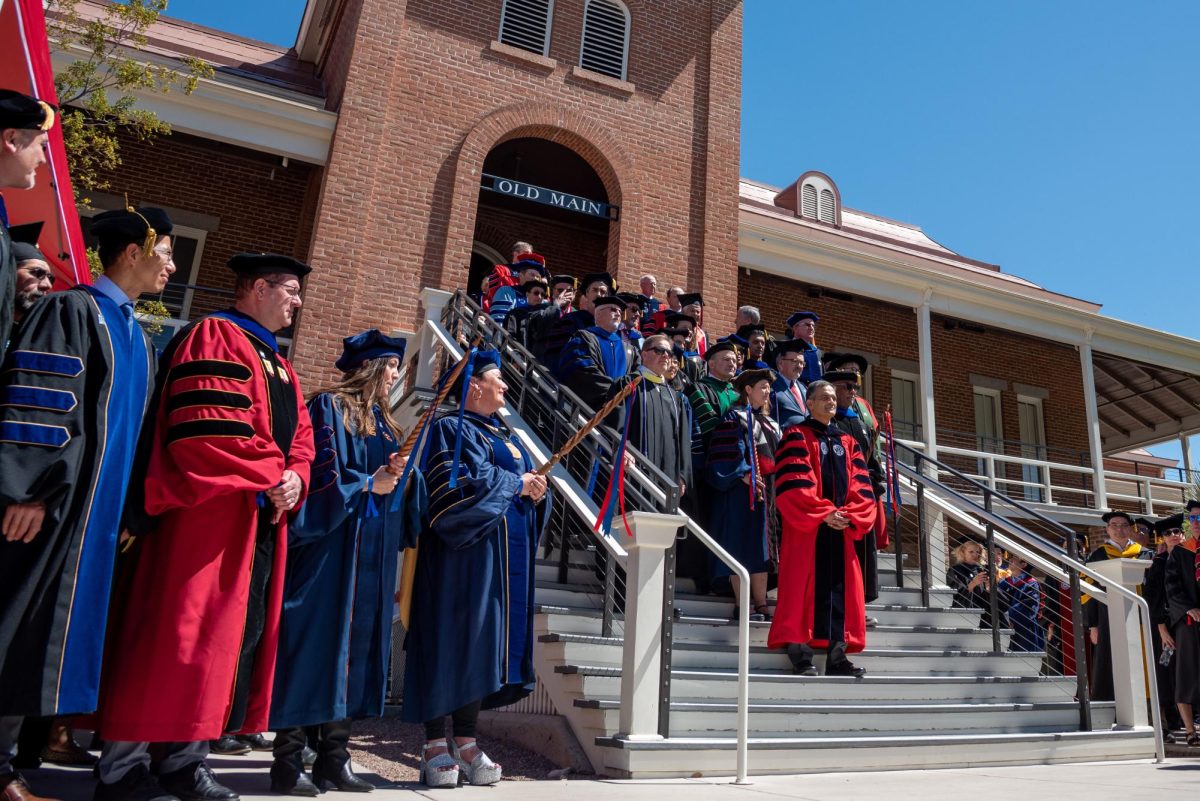The release of a strategic plan this month marked the start of a new era for a UA unit aimed at sharing faculty technological innovations.
Tech Launch Arizona’s strategic plan, “Roadmap,” is a guide for the unit’s current and future plans to help share UA faculty’s technological innovations with those outside the university. Its goal is to advance university “discoveries into intellectual property, inventions and technology,” according to the Office of Technology Transfer website.
“What we created is a framework for the changes that are occurring and will occur,” said David Allen, executive director and vice president of Tech Launch. “It provides an overview for people to understand that the operation is going to be different and how it’s going to be different … It shows that this new team that has been created has the knowledge, experience and the resources to carry on the plan.”
Tech Launch, which is a presidential cabinet-level unit that reports directly to UA President Ann Weaver Hart, oversees the offices of Technology Transfer, Corporate and Business Relations and University Research Parks.
Having the three under the same umbrella is a “big step forward,” said Bruce Wright, associate vice president for University Research Parks, which used to work independently from the other two offices.
The Roadmap outlines the unit’s work toward technology commercialization, industry-sponsored research and integrating the UA and university technology parks, in the hope of moving inventions from UA researchers to outside markets.
“It’s not critical that we distinguish ourselves from others,” Allen said. “We want to be distinguished in what we do.”
The Arizona Board of Regents has set four measurements for goals related to technology commercialization by 2020, including 210 invention disclosures, 20 U.S. patents issued, $3.65 million worth of revenue derived from UA intellectual property and 14 new companies started, according to Tech Launch’s website.
“We’re streamlining and increasing the technology portfolio of the university, and we’re going to increase the amount of technology that’s licensed, and we’re going to increase the amount of venturistic capital available to start companies,” said Lewis Humphreys, the Tech Launch marketing and communications manager.
This increase has started a cultural shift among faculty by creating a new emphasis on technology commercialization and economic development, he added. To facilitate this transformation, Tech Launch has a host of services that help researchers turn discoveries into assets for both revenue and social benefit.
In January, Tech Launch began the Proof of Concept Program, which awarded 19 researchers a combined $715,000 to help them move “promising inventions” past obstacles and closer to commercialization.
“There’s a vision for a bold and enlightened dynamism that I hope you feel here, and a commitment to turning the knowledge that we create into enterprises for the benefit of all of us,” Hart said at the release of the unit’s Roadmap strategic plan on April 1.
Allen said that while it might not be an easy road, the future seems optimistic for Tech Launch.
“We’re in the early stages of a transformation,” Allen said. “It doesn’t happen overnight, but changes are occurring on a daily basis and my request is for people at the University of Arizona to engage with us and give us a chance to demonstrate that we can deliver.”
The commitment to Tech Launch from both Allen and Hart is a sign of exciting things to come for the unit and for the UA, according to Wright.
“They’re not satisfied with just being good,” Wright said, referring to Allen and Hart’s drive to better the UA. “They want to be one of the best universities in this field of work … and we have a good chance of achieving that with TLA [Tech Launch Arizona].”








